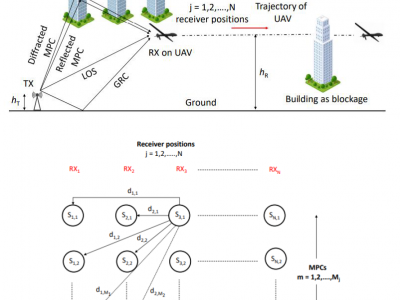Datasets & Competitions
Ground-to-air (GA) communication using unmanned aerial vehicles (UAVs) has gained popularity in recent years and is expected to be part of 5G networks and beyond. However, the GA links are susceptible to frequent blockages at millimeter wave (mmWave) frequencies. During a link blockage, the channel information cannot be obtained reliably. In this work, we provide a novel method of channel prediction during the GA link blockage at 28 GHz.
- Categories:
 472 Views
472 ViewsThe dataset is divided into two parts. The measurement dataset and simulation dataset. The measurement dataset contains received power measurements at 28 GHz in an indoor corridor and outdoor open area. The received power and other channel statistics, e.g., root mean square delay spread, power and time of arrival of multipath components, and path loss were obtained using the PXI channel sounder system. Two different gain antennas 17 dBi and 23 dBi were used. The transmitter was fixed, whereas the receiver was moved in a straight line aligned to the boresight of the transmitter antenna.
- Categories:
 383 Views
383 ViewsThe measurement dataset consists of reflected received power from different shaped and sized metallic reflectors at 28 GHz in the indoor corridor and outdoor open area. PXI channel sounder from National Instruments was used for measurements. Horn antennas of gain 17 dBi were used at the transmitter and receiver. The measurements consisted of three flat square metallic reflectors of sizes 0.84 × 0.84 m^2 , 0.61 × 0.61 m^2 , and 0.3 × 0.3 m^2 , a sphere, and a cylinder. The effect of size and shape of the reflectors on the coverage was analyzed in the indoor corridor and outdoor open area.
- Categories:
 350 Views
350 Views


